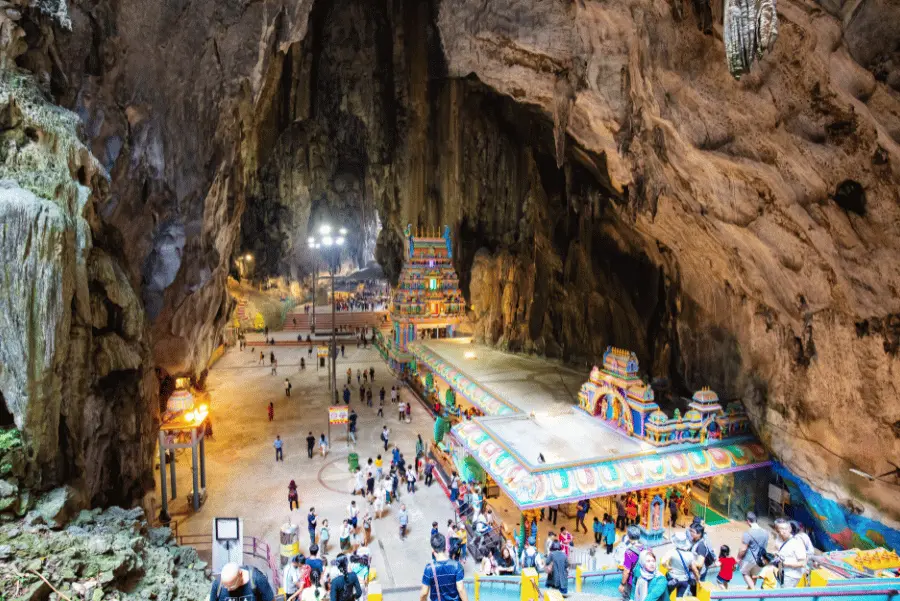Ellora Caves Unveiled: A Guide to the World Heritage Site. Located in the central part of Maharashtra, India, Ellora Caves is a reflection of India’s rich history of art and architecture. As one of the most famous World Heritage sites of India, these gemstone-cut grottos provide an unparalleled wisdom into ancient Indian art, religion, and artificer. Then is an in- depth companion to exploring the Ellora Caves, it’s fascinating history, and why it should be on every rubberneck’s pail list.
1. What Are the Ellora Caves?
The Ellora grottoes are a group of 34 gemstone. Cut tabernacles and cloisters positioned about 30 kilometers north of Aurangabad in the state of Maharashtra.
Carved into the Charanandri hills, between 600 and 1000 announcement, the grottoes have been. Eexhibiting a blend of three prevailing persuasions Buddhism, Hinduism, and Jainism.
2. History of Ellora Caves a Peep into the history
India’s Ellora Caves are closely associated with the history of religious art and architecture. Ellora’s grottoes, built over 500 years, are a stunning fusion of diverse religious expressions.
– Buddhist grottoes (grottoes 1- 12) Buddhist tabernacles and cloisters are the oldest grottoes in Ellora. Buddhist monks built temples between the 5th-7th centuries, showcasing Buddha sculptures, wall carvings, and prayer halls.
– Hindu caves (Caves 13- 29) Between the 7th and 9th centuries, the Hindu people also contributed their beneficence to the point. The Kailasa Temple (Cave 16) is a monolithic structure carved from top to bottom, remarkable.
– Jain grottoes (Caves 30- 34) Jain monks built the grottoes between the 9th and 10th centuries. These are infamous for their serene atmosphere and lovely busts, especially the finely detailed puppets of Tirthankaras.
Ellora grottoes represent ancient Indian art and religious fervor, a must-visit for history enthusiasts.
3. Ellora Caves Guide Discovering the tabernacles and cloisters
A trip to Ellora requires planning, as the site spans a large area with fascinating grottoes. A useful companion to discover the highlights of the grottoes is as follows
– Kailasa Temple (Cave 16) This is the biggest and most stunning delve
It’s a tabernacle for Lord Shiva. It’s the only monolithic tabernacle in the world and a genuine phenomenon of armature. The tabernacle is infamous for its grand busts and majesty.
– Vishvakarma Cave(Cave 10) Also referred to as the” Carpenter’s Cave,” this Buddhist delve is a beautiful prayer room, with Buddhist puppets and the magnific gemstone-cut patterns of the era.
– Jain Temple(Cave 29) The delve is a beautiful depiction of Jain armature, with delicate busts of various Tirthankaras and their votaries.
– The Prayer Hall(Cave 12) This exploration, or the ” Chaitya Hall, ” is a great example of early Buddhist armature, with a huge Buddha statue at the center.
Read also: A Complete Guide to the Top 10 Things to Do in Rome
4. Ellora Caves Tourism Tips for Callers
Ellora Caves is a favorite among excursionists, drawing callers from each corner of the globe. Then is how to make the most of your visit
– Time to Visit – Chic Chic time to go to Ellora Caves is October to March when the precipitation is amicable and chilly. Do n’t go in thunderstorm season because the grottoes will be slippery and tougher to visit.
– How to Reach You can reach Ellora Caves by road and rail, which are well connected to cities like Mumbai and Pune. You can take a hack or machine from Aurangabad to the grottoes.The nearest field is also at Aurangabad.
– Guided tenures to fully understand the history and significance of the grottoes, it’s prudent to use a guide. Original guides offer insightful tours, highlighting the intricate busts, religious significance, and unique architecture.
– What to Wear Since Ellora Caves is an out-of-door location, casual wear, walking shoes, and a chapeau or sunscreen are prudent, especially if you plan to explore all the grottoes.
5. Preservation and UNESCO Recognition
Ellora grottoes are among India’s greatest UNESCO World Heritage sites. The state protects them and takes measures to preserve their architectural and literal integrity. In malignancy of the problems created by natural wear and tear and gash, the site remains in vogue among excursionists and experimenters also.
Ellora Caves Unveiled: A Guide to the World Heritage Site
Zurich Unplugged: A 3-Day Itinerary for Discovering Hidden Gems and Quiet Charm


Pingback: 10 Must-Visit Destinations in the Heart of Arabia - Travelogy